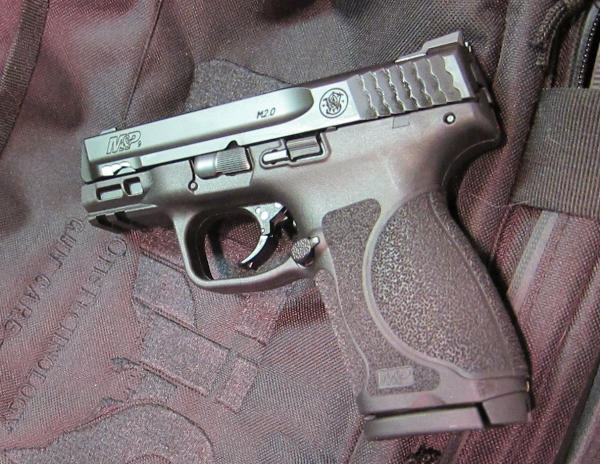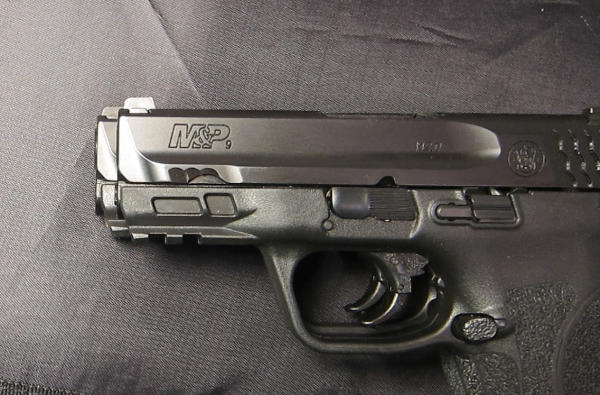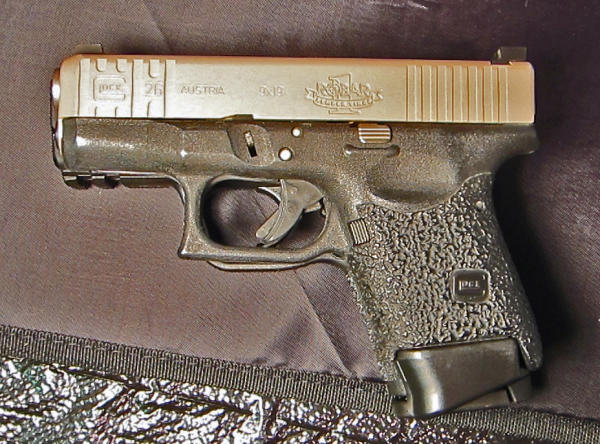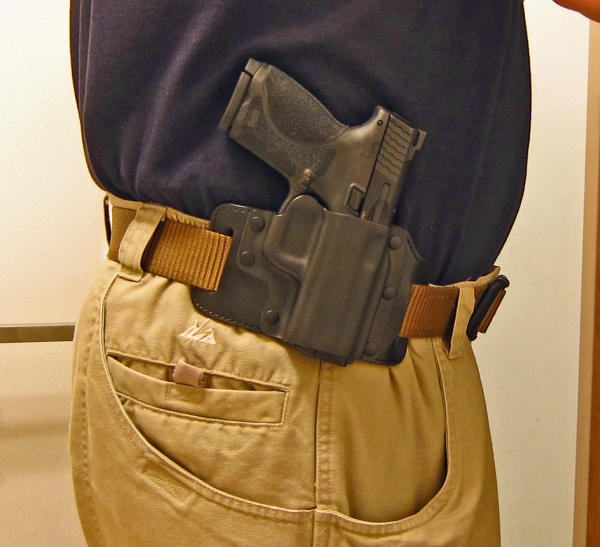
Smith & Wesson fully entered the polymer pistol arena with the M&P series – I’m not counting the Sigma as it never attained the market impact that the M&Ps have. That said, the most popular polymer defense pistol format was typified by the Compact – the GLOCK 19. Fifteen rounds of 9mm in a 4” barrel format was the magic. Then S&W came in with the updated-upgraded M&P with the M2.0 version.
Responding to some perceived issues with the original series, the M2.0 took off. Principal changes included a long stainless steel chassis, improved trigger and more aggressive texturing.
Then they dropped the bomb – the M&P9 M2.0 Compact. A four-inch fifteen shot 9mm – where have we seen that before? – the M2.0 Compact was the answer to the desires of the anti-GLOCK types who nevertheless saw the value of the striker-fired polymer service auto. Well, that was then. Now there’s a Compact . . . Compact. I’ll call it the “Truncated Compact,” the M&P9 M2.0 3.6” Compact. The “inches” designation refers to a shorter-than-four-inch barrel. Meanwhile, the gun previously known as the M&P9 M2.0 Compact became the M&P9 M2.0 4" Compact -- after the advent of the Truncated Compact.
Anyone want to scream? No?
I am surprised after the howls of protest over the GLOCK 19X – a “compact” slide and barrel atop a full-size (GLOCK 17) service frame.


“Don’t they understand,” the complainants said. “The hard part to hide is the frame – not the barrel and slide.” Aside from the fact that GLOCK didn’t make it as a concealment pistol and was targeting a government contract, the G19X turned out to be greater than the sum of its parts, but that’s another tale.
So what’s the good in shortening the barrel and slide of the M&P Compact, leaving the frame at its original (nearly) dimensions?
Go back and take a look at early snub revolvers. Always considered a “bad idea” by the “smart set,” the two-inch N- and K-frame snubs found their way into the souls of many, me included. The short barrel has a few upsides – speed and for people with certain vision issues, some precision – plus, for the rest of us, it was discovered that the 2” Combat Masterpiece was every bit the equal to the 4” version – and to the six-inch K-38 . . . in the right hands.
You could win a lot of bets at the police range of the 1960s and 1970s with a snub K-frame (or Python, for that matter).
Aside from being just a smidge faster from the holster – and moving from target to target, the short gun was harder to rip from someone’s hands. Consider gun retention: the grip frame (the revolver’s stocks also) have more contact with your hand than the attacker can gain by grabbing the barrel/slide.
When I first saw that S&W had done this, I was a bit surprised. That’s gunhandler thinking, not engineer thinking.
The Truncated Compact has the interchangeable palmswell inserts like the rest of the line – four of them – to fit individuals. A pair of magazines are included, fifteen round types for free states. A pair of “boots” to fit over “standard” M&P magazines of 17 rounds capacity are also in the box. This prevents an unsightly showing of the magazine body of the full-size M&P protruding from the Compact’s base.
So how does this gun compare with a “micro” or “baby” service-type pistol. I looked around at the manufacturer’s websites and made a chart.
Chart: Comparison of sample versus similar guns (data from companies)
|
M&P9 M2.0 3.6" Compact |
M&P9 M2.0 4" Compact |
Glock 26 |
|
|
Capacity: |
15+1 |
15+1 |
10 + 1 |
|
Barrel Length: |
3.6” |
4” |
3.42” |
|
Overall Length: |
6.8” |
7.3” |
6.49” |
|
Weight: |
26 oz. |
27 oz. |
22 oz. |
In the main, the Glock 26 is quite a bit smaller than the Compacts in terms of capacity and weight. The barrel length and overall length are only slightly less than the Truncated Compact. The micro-Glock’s height, at 4.17 in., is quite a bit less than either of the S&Ws – until you add a Glock OEM +2 magazine extension, bringing its capacity up to 12 + 1.
In other words, the difference in overall dimension is very slight compared to the difference in capability. This doesn’t mean the G26 is invalidated; I’ve carried it in an Alessi Ankle Holster to back up a Glock 19 in a belt holster and I’ve pocket carried it in chinos using a pocket holster from Pocket Concealment Systems.

That’s not likely to happen with the Truncated Compact, nor does it have to. I think the TC may well stand on its own. Time will tell.
Want to compare it to a GLOCK pistol? Consider a GLOCK 26X – a G26 barrel and slide over a G19 frame. It’s on that order.
I won’t be comparing the Compact and Truncated Compact on gun retention values. I don’t have analog non-functional models and we’ve proved with concept with revolvers years ago. I have a holster – the Galco Tac-Slide belt holster – that will accommodate both guns.
It’s a kydex shell over a leather back that incorporates belt slots.
Using that, I can compare the guns on three parameters. First, I’ll shoot both with a variety of rounds to get a baseline comparison of accuracy and some idea of reliability. Then, I’ll do draws to single hits with each, keeping track of the time from the buzzer to the shot – consistent with keeping the hits inside a reasonable target.
I’ll finish with a recovery drill to determine, as best I can, any difference in shot-to-shot recovery time between the pair.
It’ll be an interesting exercise and, as always, we’ll keep you posted.
- - Rich Grassi
